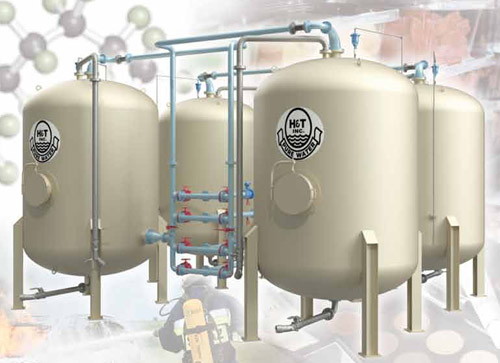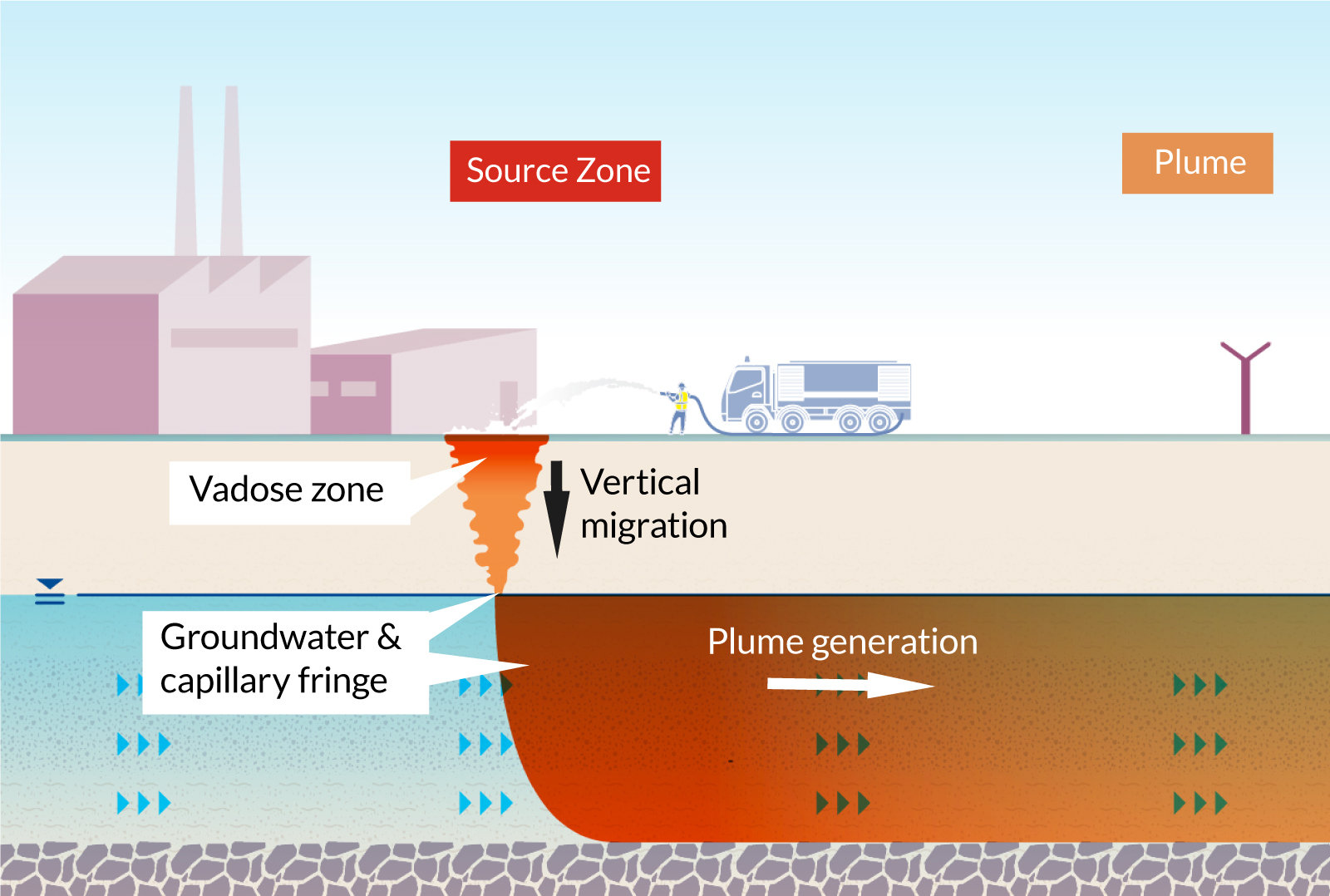PFAS Waste Management for Safer Disposal and Environmental Protection
PFAS Waste Management for Safer Disposal and Environmental Protection
Blog Article
Exactly How PFAS Treatment Makes Certain Tidy and Lasting Water
The existence of PFAS, typically recognized as "for life chemicals," positions significant challenges to water high quality and public wellness. Advanced therapy modern technologies, including turned on carbon adsorption and membrane layer filtration, have actually become reliable remedies to alleviate these pollutants. By employing these approaches, areas can not only accomplish cleaner water yet also foster lasting methods that shield environments. Nevertheless, the effects of these treatments expand past immediate health benefits; they raise crucial concerns regarding long-term water management approaches that have to be addressed to make sure a resistant future. What does this mean for our approach to water sustainability?

Comprehending PFAS Contamination
PFAS, or per- and polyfluoroalkyl substances, have actually become a substantial environmental problem due to their widespread occurrence and persistence in the atmosphere. These artificial chemicals have been used in various commercial applications and customer products, consisting of non-stick cooking equipment, water resistant clothes, and food packaging, because of their one-of-a-kind residential or commercial properties such as water and oil resistance.
The contamination of dirt and water sources by PFAS occurs mainly through commercial discharges, firefighting foam use, and leaching from garbage dumps. pfas management. When released, these substances are resistant to deterioration, leading to their buildup in the atmosphere. This persistence elevates important issues, as PFAS can travel fars away via groundwater and surface area water systems, influencing drinking water materials and ecological communities

Health Risks of PFAS
The persistence of PFAS in the setting raises considerable wellness concerns for individuals exposed to these substances. Research has linked PFAS exposure to numerous damaging health and wellness effects, consisting of immune system dysfunction, liver damages, and boosted danger of certain cancers cells.
The ubiquity of PFAS in customer items, such as non-stick pots and pans, water-repellent fabrics, and food packaging, additional enhances the risk of direct exposure. Drinking water infected with PFAS is a substantial concern, as these chemicals can seep into groundwater resources. Prone populations, consisting of kids and those living near industrial websites, might deal with intense dangers due to their creating systems and potential for greater exposure degrees.
As understanding of these health risks continues to grow, governing companies are beginning to develop standards for PFAS degrees in drinking water. Public health campaigns are important to reduce direct exposure and secure neighborhoods from the lasting effects of these harmful substances.

Cutting-edge Treatment Technologies
Just how can we effectively tackle the difficulties positioned by PFAS contamination in water resources? Cutting-edge therapy technologies are arising as vital remedies in the mission for clean water. These methods concentrate on the removal or destruction of per- and polyfluoroalkyl substances (PFAS), which are notorious for their persistence in the atmosphere.
One encouraging technique is adsorption utilizing sophisticated materials, such as triggered carbon and ion exchange materials. These materials have actually shown efficacy in capturing PFAS particles from water. Another noteworthy innovation is membrane layer filtering, which utilizes nanofiltration and reverse osmosis to separate contaminants at the molecular degree, therefore providing an obstacle versus PFAS.
Additionally, advanced oxidation procedures (AOPs) utilize solid oxidants to damage down PFAS compounds right into safe by-products. This approach is specifically reliable for treating highly polluted water resources. Bioremediation methods, employing particular bacteria, are additionally being checked out to degrade PFAS.
As study continues, crossbreed systems that incorporate numerous innovations may use enhanced efficiency, attending to the intricacies of PFAS contamination. The growth and application of these cutting-edge treatment technologies are important steps towards guaranteeing the security and sustainability of our water sources.
Advantages of Effective PFAS Therapy
Properly dealing with PFAS contamination in water resources significantly boosts public health and environmental safety and security. PFAS, typically referred to as "permanently chemicals," are immune to destruction and can collect in the body, navigate here leading to significant health dangers such as cancer cells, liver damages, and body immune system dysfunction. By executing effective therapy approaches, communities can lower why not look here exposure to these harmful materials, inevitably enhancing the wellness results of their populations.
Additionally, successful PFAS therapy adds to the conservation of neighborhood environments. Infected water can adversely impact marine life and interrupt the delicate balance of regional habitats. By making certain clean water, therapy processes safeguard biodiversity and keep environmental stability.
In addition, effective PFAS remediation can cultivate public confidence in water quality. When communities are guaranteed that their drinking water is free from hazardous impurities, it promotes a feeling of safety and well-being. This depend on is vital for area involvement and assistance for ongoing water administration campaigns.
Future of Water Sustainability
Amidst expanding concerns concerning water quality and shortage, the future of water sustainability depends upon innovative methods and collaborative efforts. As neighborhoods encounter the impending threats of pollutants like PFAS, the advancement of sophisticated therapy modern technologies is essential. These modern technologies not just concentrate on the removal of damaging materials yet additionally advertise the reuse and recycling of water, consequently reducing total need.
Additionally, reliable water governance plays an essential duty in making certain sustainable techniques. Policymakers must integrate clinical research study with regulative frameworks to establish clear guidelines for water use and treatment. Stakeholder interaction, consisting of neighborhood areas and industries, cultivates a feeling of common duty and motivates sustainable methods throughout various industries.
Investment in facilities is likewise important; upgrading aging systems to include modern filtering and purification techniques can substantially enhance water quality. Welcoming green modern technologies, such as all-natural purification systems, can offer navigate to this website environmentally friendly solutions.
Ultimately, the future of water sustainability depends on an alternative technique that integrates modern technology, policy, and area involvement. By focusing on these aspects, we can safeguard our water resources for generations ahead, making sure clean and sustainable water for all.
Final Thought
In verdict, the effective treatment of PFAS is necessary for guaranteeing tidy and lasting water. Inevitably, durable PFAS treatment techniques contribute to long-lasting resilience in water management, cultivating public depend on in water quality and advertising sustainable techniques.
Report this page